All issues

Volume 34, Issue 5
Displaying 1-3 of 3 articles from this issue
- |<
- <
- 1
- >
- >|
-
1965 Volume 34 Issue 5 Pages 438-500
Published: May 25, 1965
Released on J-STAGE: August 05, 2011
JOURNAL FREE ACCESSDownload PDF (13188K) -
Kohei Ando, Jun Nishikawa, Takio Okuda1965 Volume 34 Issue 5 Pages 501-510
Published: May 25, 1965
Released on J-STAGE: August 05, 2011
JOURNAL FREE ACCESSEffects of electrode spacing, plate width, plate thickness, electrode force and back up stool materials on shunting currents in the plates and their effects on tensile shear strength were investigated. And theoretical analysis was also given.
1. For wider plate width, shunting current increases. However, for width greater than 240 mm, no remarkable increase of the current is observed.
2. In 2 mm thick plate, flashing between upper plate and upper electrode occurres because of large shunting current in upper plate. Accordingly, series spot welding seems to be difficult for the steel sheet thicker than 2 mm.
3. Shunting current is affected by back up stool materials (resistivity of stool) and tensile shear strength is affected by the shunting current and thermal conductivity of the stool. (See Fig. 14, Fig. 15).
4. Shunting current in upper plate is available to increase tensile shear strength, depending on current level as shown in Fig. 17. Lower plate shunting current can be divided to effective part and ineffective part for tensile shear strength as shown in Fig. 18.
5. Basic equation of current in plate of series spot welding is given in equation (7). Calculated value from the equation agrees with measured value within 5% error.View full abstractDownload PDF (1884K) -
Midori Otani, Yoshiharu Ideguchi, Eiji Nakamoto1965 Volume 34 Issue 5 Pages 511-519
Published: May 25, 1965
Released on J-STAGE: August 05, 2011
JOURNAL FREE ACCESSIt is generally deemed for structural steels that the resistance against brittle fracture in transverse direction to rolling (Y-direction) should be inferior to the one in rolling direction (X-direction), since the notch-impact values for Y-direction are usually fairly smaller than that for X-direction at higher temperature side of transition curves.
Experiments were made to see whether such expectation is correct or not, using two heats of structural high strength steel (60 kg/mm2 class), one with no directionality and the other with marked directionality. The fracture and flow stress curves of those steels were investigated in both X and Y-directions, and compared with the results of V-notch charpy test. As the result of the examination, the following were concluded.
(1) Each shape of two fracture stress curves, cleavage and fibrous, was almost the same for both directions in two steels tested.
(2) It was found that the maximum energy absorbed in V-notdh charpy test (2VEmax) was correlated with the flow stress curve of round bar, measured at higher temperature (80°C), through a parameter, σ1ε1+0.2 σ2ε2 (cf. Fig. 17). This value, 2VEmax, had no correlation with the cleavage fracture stress curve.
(3) It was revealed in another paper 4) that the fracture stress curves, especially the cleavage type one, were closely related to the brittle fracturing as shown in Figs. 19 and 20.
(4) Then it was proper to conclude, taking into account the considerations above, that the difference in 2VEmax induced by rolling, was of no significance as regards brittle fracturing, provided that the notch-impact values at lower temperature range and the fracture transition temperature were equal.View full abstractDownload PDF (480K)
- |<
- <
- 1
- >
- >|